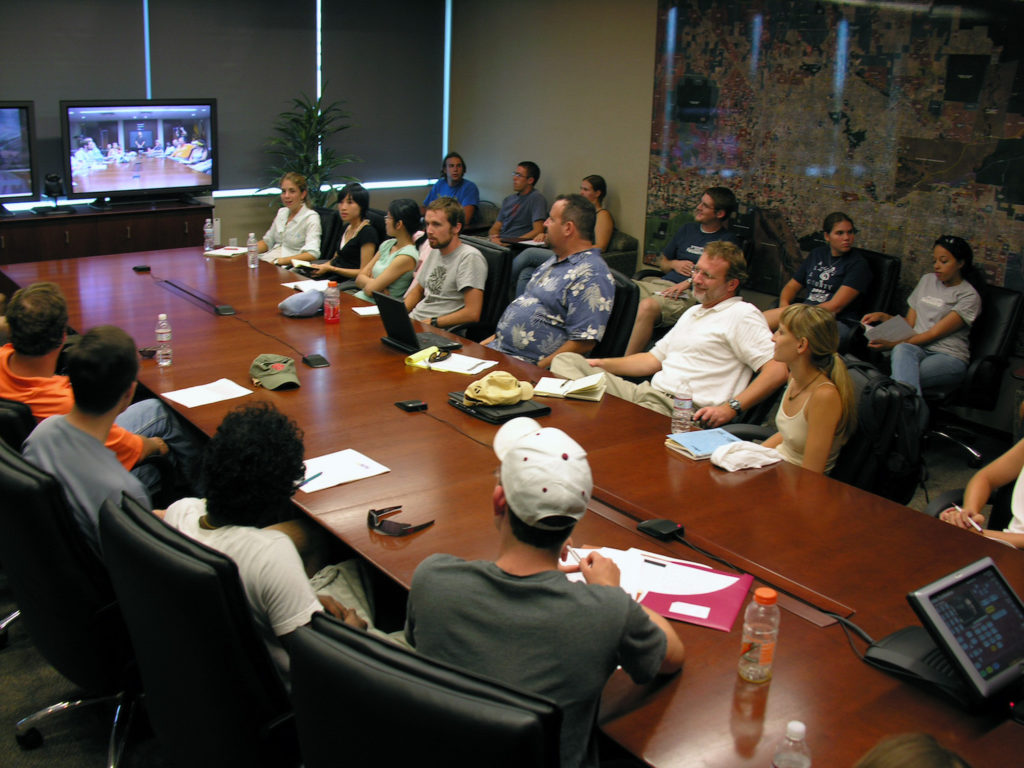
• Flying or driving and staying in hotels uses lots of energy, which inevitably generates carbon dioxide that contributes to climate change plus air pollutants that lead to smog.
• In-person meetings are often littered with excessive paper documents, plastic bottles of water, and refreshments served on paper and plastic that can’t be recycled.
• Food waste is another big issue; most conference organizers order much more food than can be consumed by the attendees. When the meeting is over, those extra sandwiches, cookies, casseroles, salads and apples usually end up in the trash.
No wonder video conferencing is increasingly becoming an energy-smart, economically viable and environmentally-friendly way to “attend” or sponsor a meeting. We’ve partnered with BlueJeans Video Conferencing to raise awareness on this issue by highlighting…
5 Ways Video Conferencing Protects the Environment
1) Save Energy – According to a report commissioned by the Carbon Disclosure Project (CDP) and sponsored by AT&T, video conferencing can avoid millions of metric tons of carbon dioxide emissions. For example, the study looked at businesses based in the United States and the United Kingdom with annual revenues of more than $1 billion. Their analysis showed that teleconferencing could cut nearly 5.5 million metric tons of CO2 emissions by 2020 with broad adoption of teleconferencing. That’s like taking one million passenger vehicles off the road. Mobile video conferencing solutions like those provided by Blue Jeans Video Conferencing help reduce the power requirements of the technology even further. In 2014, businesses are no longer limited to using video conference software in just a conference room or boardroom. With software available on your mobile device or computer, face-to-face communication between co-workers, or co-workers and clients, is easily possible.
2) Reduce Paper, Printer Ink and Toner — Reducing paper consumption is another significant bonus. Rather than print out paper documents for each in-person attendee, agendas, memos, reports, edits and recommendations can be shared digitally, eliminating the need for any paper at all. Every piece of paper you don’t use is not only money saved, notes the Natural Resources Defense Council, but also energy and effort saved.
3) Skip Plastic – Most conferences make sure all attendees have an unlimited supply of bottled water. But what happens to all those throwaway bottles when the conference is over? When you’re sitting in on a teleconference, you’re more likely to use a water glass or reusable mug.
4) Limit Food Waste – Most conferences end up providing two or three meals per day, plus snacks and a cocktail hour of some sort. Ideally, the leftovers would be picked up by a soup kitchen or food bank. More often, they’re just thrown away. If you’re sitting in on a teleconference at your desk at home or in the office, you’re probably eating what you’d normally have, and wrapping up the leftovers for the next day.
5) Save Time and Increase Flexibility – One big benefit of video conferencing that has less to do with the environment than with overall quality of life is that it saves so much time. How often have you traveled 24 or 48 hours for a meeting that lasts no more than 8? Especially if you have small children, a growing business that’s hard to leave, or other professional or personal obligations, being able to attend a meeting virtually without having to leave home or the office can reduce stress while still allowing you to meet your obligations. Plus, another significant advantage of video conferencing is the flexibility it allows when unexpected circumstances require people to exchange information “in person” but at the last minute. It’s far easier and more cost-effective to arrange a video conference when an emergency arises.
Wrap-Up
Whether you’re motivated to reduce your environmental impact, save money and time, or increase flexibility, adopting some form of video conferencing is a great way to get started.












